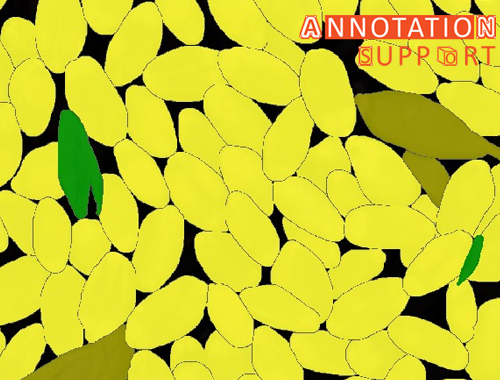Modern farming practices employ data analytics to enhance agricultural output through data-based resource management while achieving sustainability goals. The core capability which enables precision agriculture depends on data annotation since it allows machine learning (ML) and artificial intelligence (AI) models to correctly understand agricultural information. The analysis examines data annotation services in precision agriculture by studying their function together with their difficulties and advantages.

1. Understanding Data Annotation in Precision Agriculture
Data annotation serves as the practice of tagging unprocessed agricultural information through images and sensor outputs and satellite images for AI model education purposes. The defined labelling method enables AI systems to detect patterns which help generate proper predictions about crop health together with soil quality and pest information.
Types of Data Annotation in Precision Agriculture
Image Annotation: The annotation tool Bounding Boxes enables the detection of crops and weeds as well as pests together with diseases within aerial or field images.
Semantic Segmentation: Semantic Segmentation enables recognition between plant species, water bodies as well as soil types in a single image.
Instance Segmentation: This method separates individual objects from each other while keeping them in the same class (multiple diseased plants serve as an example).
Key Point & Landmark Annotation: Key Point and Landmark Annotation serves as a tool which detects crop development stages and recognizes precursors of stress indicators.
Text and Audio Annotation
- The analysis of agricultural reports requires Farm Logs & Reports to undergo NLP model annotation.
- Voice Control Programs that function with farmers require voice command datasets to achieve proper voice command recognition.
2. Applications of Data Annotation in Precision Agriculture
Crop Health Monitoring
The AI analyses data which consists of annotated satellite and drone images to recognize disease indicators together with nutrient problems and moisture issues in agricultural fields. Algorithms that assess multispectral images undergo annotation functions to anticipate crop damage occurrences in advance.
Weed & Pest Detection
The ability of AI depends on data annotation to separate crops from weeds which enables the operation of automated weeding systems through smart sprayers. Almost similarly the detection of pests happens through annotated images which activate pest controlling procedures.
Yield Prediction
AI models produce accurate yield forecasts when they are supplied with historical yield tags together with environmental condition information. The system enables farmers to use data-based information for scheduling plantings and managing resource distribution.
Precision Irrigation & Soil Health Analysis
Soil sensors annotated by AI systems help design better irrigation plans that water crops correctly and prevent water loss from the fields.
Automated Machinery & Robotics
Robot farm equipment depends on labelled image and LiDAR data to drive safely through farmland. Machine systems depend on precise annotations to separate crop plants from other farm items.
3. Benefits of Data Annotation Services in Precision Agriculture
Improved AI Accuracy
The right labelling of datasets helps AI models work better which leads to better crop health observation and yield estimation plus automatic farm activities.
Cost & Resource Efficiency
The ability of AI to detect more effective farming methods helps farmers save resources plus reduces operational costs and makes their operations more sustainable.
Scalability & Automation
Management of extensive farmland becomes easier through data annotation as it enables scaled results for efficient farming operations.
Decision Support for Farmers
Data annotation helps farmers access live data through their AI dashboards to take better decisions.
4. Future Trends in Data Annotation for Precision Agriculture
AI-Assisted Annotation
AI systems now help us prepare large datasets, but farm experts enhance the work to bring better results faster.
Blockchain for Data Transparency
Researchers want to protect and validate agricultural data through blockchain technology to build up trust in the annotation process.
Edge AI for On-Farm Data Processing
Sensors used in IoT and drones now process on-farm data in real-time by installing AI outside the cloud network.
Collaboration with Farmers
Farmers take part in data annotation more often through smartphone apps which help improve how datasets are organized.
Conclusion
Data annotation helps farmers leverage AI systems for better farming results through farm monitoring and automated machine use with their data predictions. Even though harvesting high-quality data on a large-scale facing problem today they can still succeed by getting help from AI annotation systems and blockchain security technology. Quality data annotation services will help the agriculture sector reach its AI potential and bring about more successful results.

